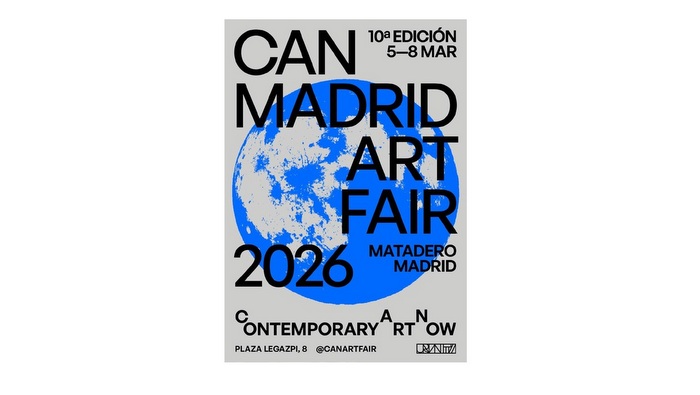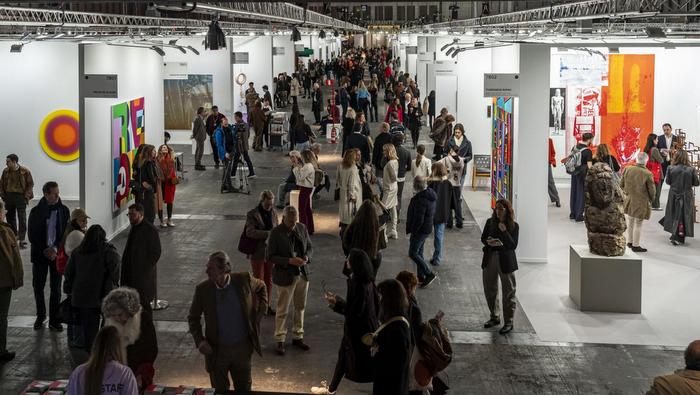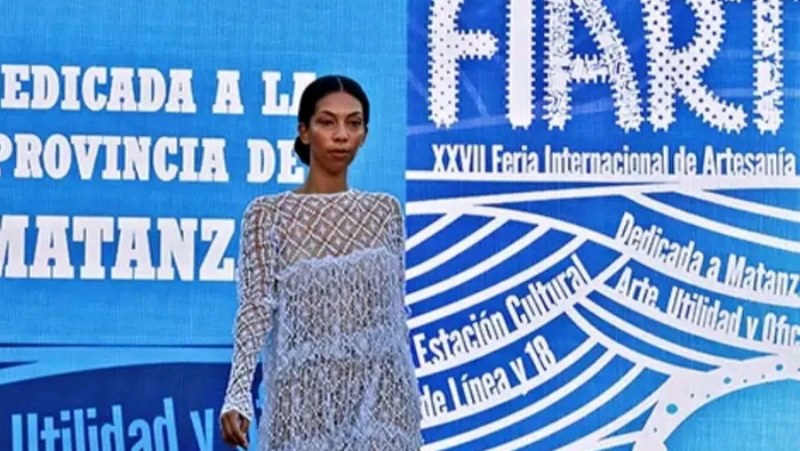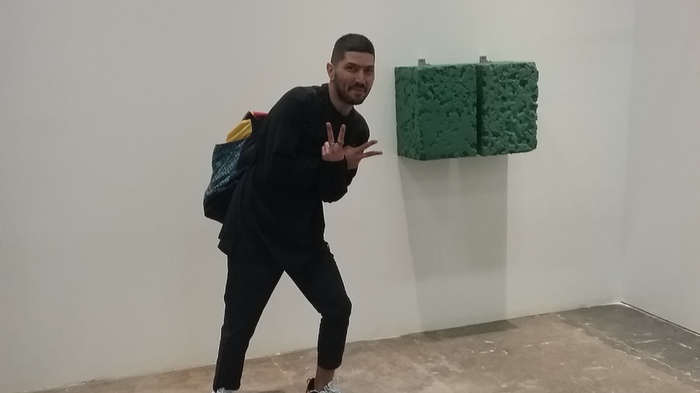Art fairs are places of very special encounters. From the spectator with the works, from the artists with new friends, and surprises that can change their destinies, the gallery owners with buyers, specialists and dissimilar opportunities to place the exhibited pieces, of the critics who discover unique paths within the history of the plastic That is infinite. Because each artist creates worlds unknown to others, those that lie asleep within themselves and float with the pieces, in the soul of the works. Therefore, entering these enclosures full of dreams realized in Art is like crossing the threshold towards new realities.
In the path of ArtBo 2019 there are few opportunities to get caught in the artistic networks that tend us, at every step, the galleries with their creators. One of them, Santiago Cansino (Chile) who exhibits with the Spanish ATM Contemporary Art, from Gijón is an interesting magnet that attracts from the first glance ... And the pieces presented exhale a chameleonic air that forces the viewer to approach, want to touch the pieces to inquire about what you are observing.
They are: Afronte, built with two blocks of phenolic foam (oasis) that when you see them you think of a piece of stone!, Estado, concrete fences commonly used to delimit spaces in the field, and Columnario, cardboard with aluminum pieces and marble ... “The latter is about an investigation I conducted on the facades of public buildings in Santiago, Chile. I walk through the historic center, I see those materials that interest me for the project, including marble, because many of these buildings have Chinese marble cladding, and I did many works with them”.
And he confessed that he has always felt in those buildings an emblematically military character, especially in Santiago. And it is that at the time of Pinochet the idea of glorifying these war icons of the captains was potentiated ... The military coup refers to a social group, that of the rich class that is defined as right, he added. And it seems unusual, he said, to have that architectural character so rigid adorned with steel forges, giant doors as fortifications with shields of protection, which gives a certain organization. "My intention regarding this is to create an idea of power in constructive systems." Recording concepts with materials
Dialogue with the young creator - graduated in engraving from the University of Chile -, one is clearing unknowns in each sentence. To ArtBo arrived now, as he said, because, last year he participated in an artistic project in El Dorado entitled Minimum unit that opened parallel to the Bogota Fair. The director of the Spanish ATM Contemporary Art gallery, Diego Suárez Noriega, passed by and became interested in his work Escudo. There began the story that came true in this 15th edition. from ArtBo, where he has found a unique place to show his interesting and imaginative creations.
Another feature that emerges from his works is the artist's ability to transform / mask the materials, or rather to give an impression that it is not. In relation to the Afronte piece, he said, he was attracted to such a fragile material (phenolic foam) allowing him to make traces on it, a kind of incisions as in the graphic. In Santiago de Chile he began that work. I went to the buildings and with the foam I took the traces of those constructions: flowers, shields… “I realized that it was a very soft material that allowed “engraving” on it those marks that gave the impression afterwards, of being a very hard material. It offered me the possibility of constructing that idea of a concrete block!, which at the end seemed like a very heavy, strong material ”. This helped me to give life in my work to this contradiction or duality: that it seemed very strong, but that it was really very soft; that it would be lasting and ephemeral: that it would feel eternal and in fact be destroyed quickly ... And I compare it then with the solid blocks of the buildings. In this piece he shows in Bogotá, he faced it with the pieces of concrete found in the Colombian capital, "that's why it looks like a rock ... green." It seems then that the piece will last a long time, but over time the phenolic foam turns to dust. And still living the material, it does NOT fall apart, he said. It is the problem of oil derivatives, which never die! “I allude with this to introduce the material in the emblems: it is important because in the end it will last a long time. The emblem is modified at last ... "As an engraved study, which in the end is a print, a print, a machine, a twist ..." a chemical war is engraving, "he said forcefully. Therefore, now change the materials in the volume with the structure of the graph.
The city as a creative compass
His work, after all, is intrinsically linked to the city. “I am very interested because I find situations in it, I investigate its footprints in concrete and it transforms me into a kind of researcher of urban phenomena, he expressed with mischievous smile. He has always liked to investigate every detail in the engraving to the fullest. "Investigate, first, and speculate, then, because I always think something is missing, to continue investigating."
When the moment comes to define his works? Stop the dialogue and underline: Objects, I cannot define a specific name. It is not engraved or sculpture, because more than anything it is related to the object, the way in which one builds things that have to do with manipulation, he said. At the climax of the dialogue, the question appeared: How would you classify your work?
Change the face, look inside searching for a specific handle, the exact term to draw it in words… “It is very difficult to classify myself. I work with the concept and try to understand art as being expansive, and as the industry progresses, materials grow, and creation processes should develop at that rate in contemporary art today. I could not go back then. Sometimes they ask me: Why don't you do engraving? I know how to engrave, I know the materials, but now the material has to mean something to use it. If not, it does not help me to create. I choose the materials that have a load ... politics, and I make sonnets to a constructive system (laughs). Can I then classify myself: am I a builder of political materials?
Publicaciones relacionadas

UVNT es ahora Can Art Fair Madrid
Diciembre 23, 2025
ARCOmadrid anuncia las galerías participantes en su 45ª edición
Diciembre 17, 2025















